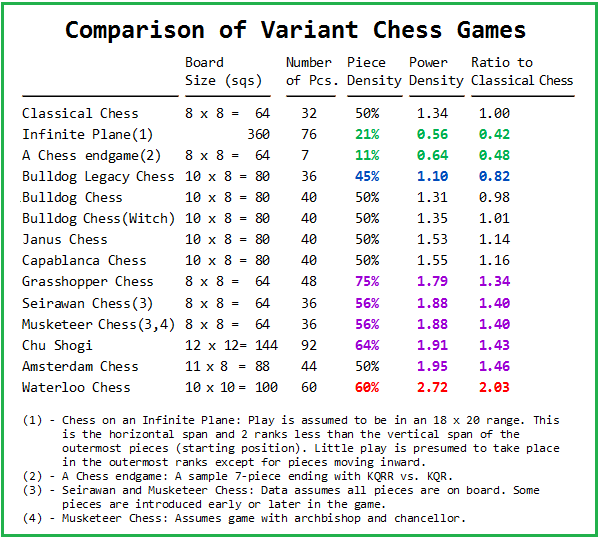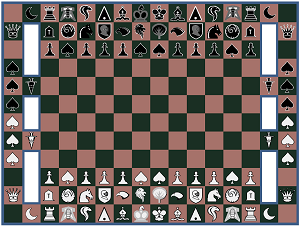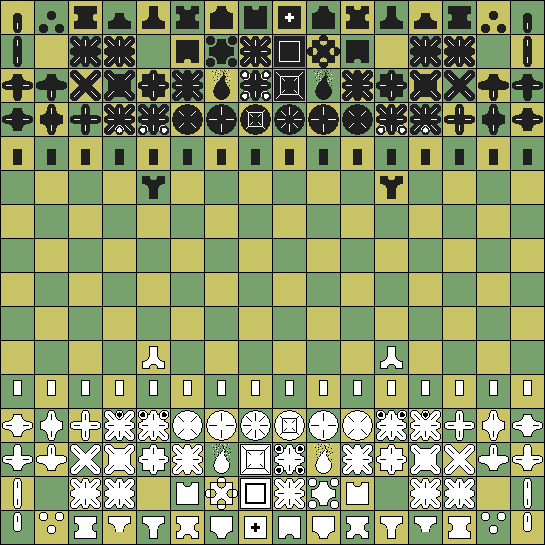It would be interesting to see where Chu Shogi would rank on this scale. You could value the generals at 2.5, the Lion at 15, Dragon Horse and Dragon King as 5 and 7. Not sure how the Lance and Reverse Chariot should be valued, though. These are confined to the edge files, so perhaps they (and the edge files) should be igored altogether.
BTW, you seem to over-estimate the 'Guard'/King. If you are not yet in a late end-game it is worth less than a Knight. And the ratio between slider and leaper values might increase when the board gets larger.














Comparison of Material Power in Variant-Chess Games
by vickalan
Classical Chess - Magnus Carlsen vs. Anish Giri, Jan 21, 2017
Bulldog Chess - foofooes vs. vickalan, Jan 21, 2017
Waterloo Chess - LXIVC vs. IvanKosintsev, Dec 19, 2016
With piece values assumed, I summarize the result in the table below showing board size, number of pieces, piece density, and material power density. Rows are ordered with classical chess first, followed by games in increasing order of power density.
brainking2016 gyrados Var
BattlechessGN18 foofooes cobra91
musketeerchess astuteoak bowlinggreen
1) Musketeer chess: (example game)
2) Bulldog Chess: (rules and analysis)(example game)
3) Bulldog Chess with Witch: (example game)
4) Bulldog Legacy Chess: (example game)
5) Waterloo Chess: (example game)
6) Chess on an Infinite Plane: (rules and example game)
7) Amsterdam Medieval Chess: (rules)